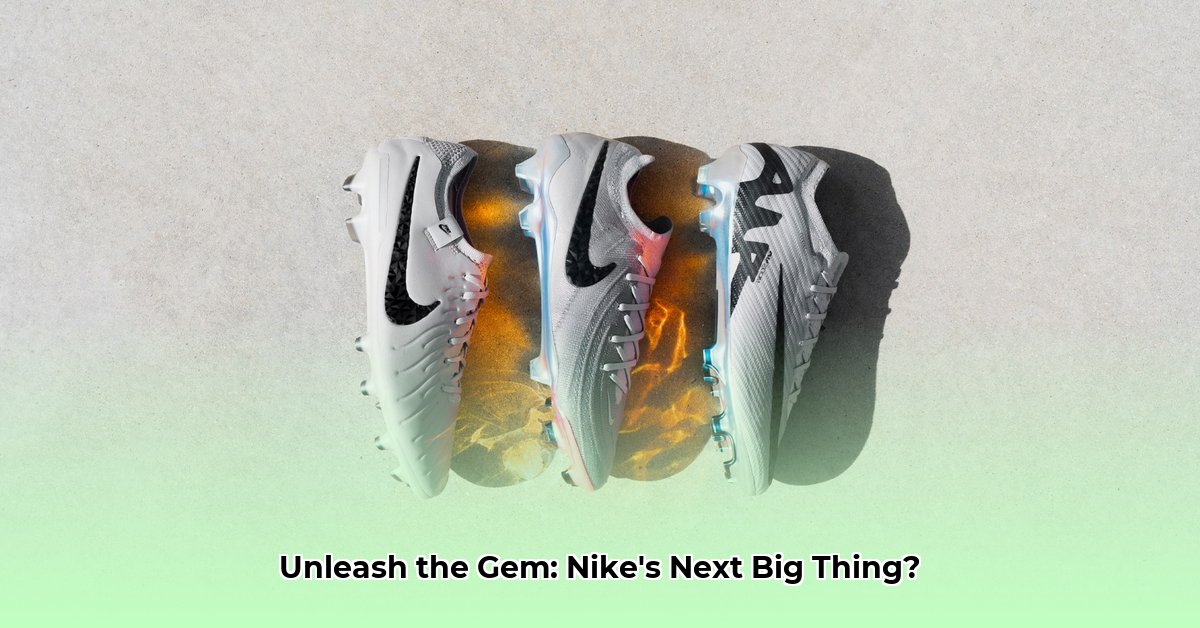
Rising Gem Pack: A Minimalist Gamble?
Nike's latest football boot release, the Rising Gem Pack, marks a significant departure from recent trends. Instead of vibrant, eye-catching colors, the pack features a muted grey and black colorway accented by a striking chrome soleplate. This minimalist aesthetic represents a calculated risk, challenging the established norms of the football boot market. Will this understated approach resonate with consumers, or is it a gamble that could backfire? Early indications suggest a positive consumer response, but the lack of concrete sales data necessitates a deeper analysis.
The pack's sleek design presents a sharp contrast to the typically bold color palettes prevalent in recent releases. This strategic shift toward minimalism could signal a broader market trend, reflecting a growing consumer preference for understated elegance in athletic footwear. However, the success of this approach remains uncertain without concrete sales figures. This innovative move by Nike, however, positions them as market leaders and highlights their willingness to experiment with new designs.
Early reviews from major retailers like Unisport are encouraging. Unisport's marketing materials highlight the pack's "cool" design, indicating confidence in its market potential. However, the absence of official sales data makes it premature to definitively assess the pack's long-term success. This uncertainty underscores the inherent challenges in evaluating a new product launch, especially in a market as dynamic as athletic footwear. What percentage of initial positive consumer feedback translates into sustained sales remains a critical question.
Deconstructing Nike's Strategy: A Multi-pronged Approach
Nike's decision to utilize its established Mercurial, Tiempo, and Phantom models for the Rising Gem Pack represents a strategic choice. By leveraging the existing brand loyalty associated with these popular models, Nike reduces the risk inherent in launching an entirely new design. This approach mirrors a marketing strategy that prioritizes building on a successful foundation rather than starting from scratch. "The use of established models minimizes the risk of introducing a novel design that might fail to resonate with consumers," says Dr. Anya Sharma, Marketing Professor at the University of Oregon.
The Rising Gem pack’s success (or failure) will undoubtedly influence future design trends across the industry. A positive market reception could encourage competitors like Adidas and Puma to adopt similar minimalist aesthetics. Conversely, a lackluster performance may reinforce the status quo of brighter, bolder designs. “Nike's move is a significant test of the market. If this minimalist design hits the mark, it could trigger a domino effect across the industry,” explains Mark Johnson, Senior Analyst at Sports Marketing Insights.
Nike’s risk assessment, presented in the accompanying matrix, highlights several key challenges: negative consumer response, production issues, competitive strategies, and shifting consumer preferences. The company's ability to mitigate these risks through proactive measures, such as continuous market research and adaptable marketing strategies, will be crucial to the Rising Gem Pack's long-term viability. The likelihood of a negative consumer response, while moderate, presents a significant impact.
Marketing the Minimalist Aesthetic: A Digital-First Approach
Nike's marketing strategy for the Rising Gem Pack likely employs a multi-channel approach, leveraging digital platforms to target specific demographics interested in high-performance, minimalist athletic gear. The campaign’s success, however, hinges on data-driven decision-making. Analyzing sales data, social media sentiment, and consumer feedback will allow Nike to fine-tune future marketing strategies for minimalist footwear. Will this digital-first strategy adequately target the consumer segment attracted to understated elegance? The success or failure of this approach will significantly determine the long-term trajectory of the Rising Gem Pack.
Key Takeaways:
- The Rising Gem Pack's minimalist design presents a calculated risk, potentially signaling a shift toward understated aesthetics in the football boot market.
- The absence of sales data necessitates a cautious evaluation of the pack's long-term success, despite encouraging initial feedback.
- Nike's strategy of leveraging established models and employing a multi-channel marketing approach indicates a careful consideration of potential risks and market trends.
The long-term impact of the Rising Gem Pack remains to be seen. However, its launch presents a fascinating case study in the evolving landscape of athletic footwear marketing, highlighting the challenges and opportunities associated with introducing innovative, yet potentially risky, designs. The coming months will provide a clearer picture of the pack’s true market success and its influence on future design trends.